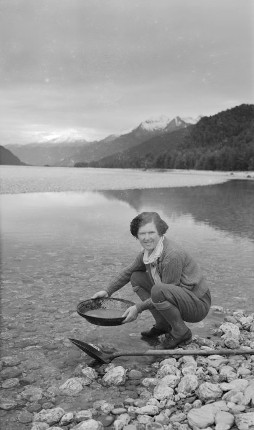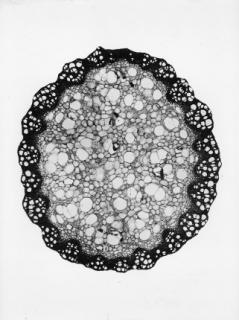Thelma Kent

Photographer (1899-1946)

Thelma Kent was first given a box camera in 1914, with which she won a newspaper photographic competition. She used the prize money to buy a better camera, and became determined to make photography her chosen career. Kent won critical acclaim for a photograph of flying gannets, which was published in Photograms of the Year 1939.
Kent had a strong interest in natural history and science, driven in part by work done for the Cawthron Institute and the Canterbury Museum. She borrowed a microscope from Canterbury Museum curator Robert Speight and became proficient at microphotography, photographing small objects with a microscope. One example (right) shows a section of a virginia creeper plant. Kent did similar work for Christchurch Hospital and Canterbury University College. She also took a series showing the life cycle of the monarch butterfly, kept an extensive aviary (including a kiwi for a time) and gave a series of radio lectures on subjects such as “Photographing the Unusual”.1
Image: Section through a virginia creeper. Source: Kent, Thelma Rene, 1899-1946: Prints and negatives of New Zealand wildlife and scenery. Ref: PAColl-3052-21-01. Alexander Turnbull Library, Wellington, New Zealand. /records/23024053
Reference:
1. New Zealand Ministry for Culture and Heritage Te Manatu Taonga, ‘Kent, Thelma Rene’, Web page, accessed 19 September 2017, https://teara.govt.nz/en/biographies/4k9/kent-thelma-rene.
This profile is part of the series 150 Women in 150 Words that celebrates women’s contributions to expanding knowledge in New Zealand, running as part of our 150th Anniversary.
